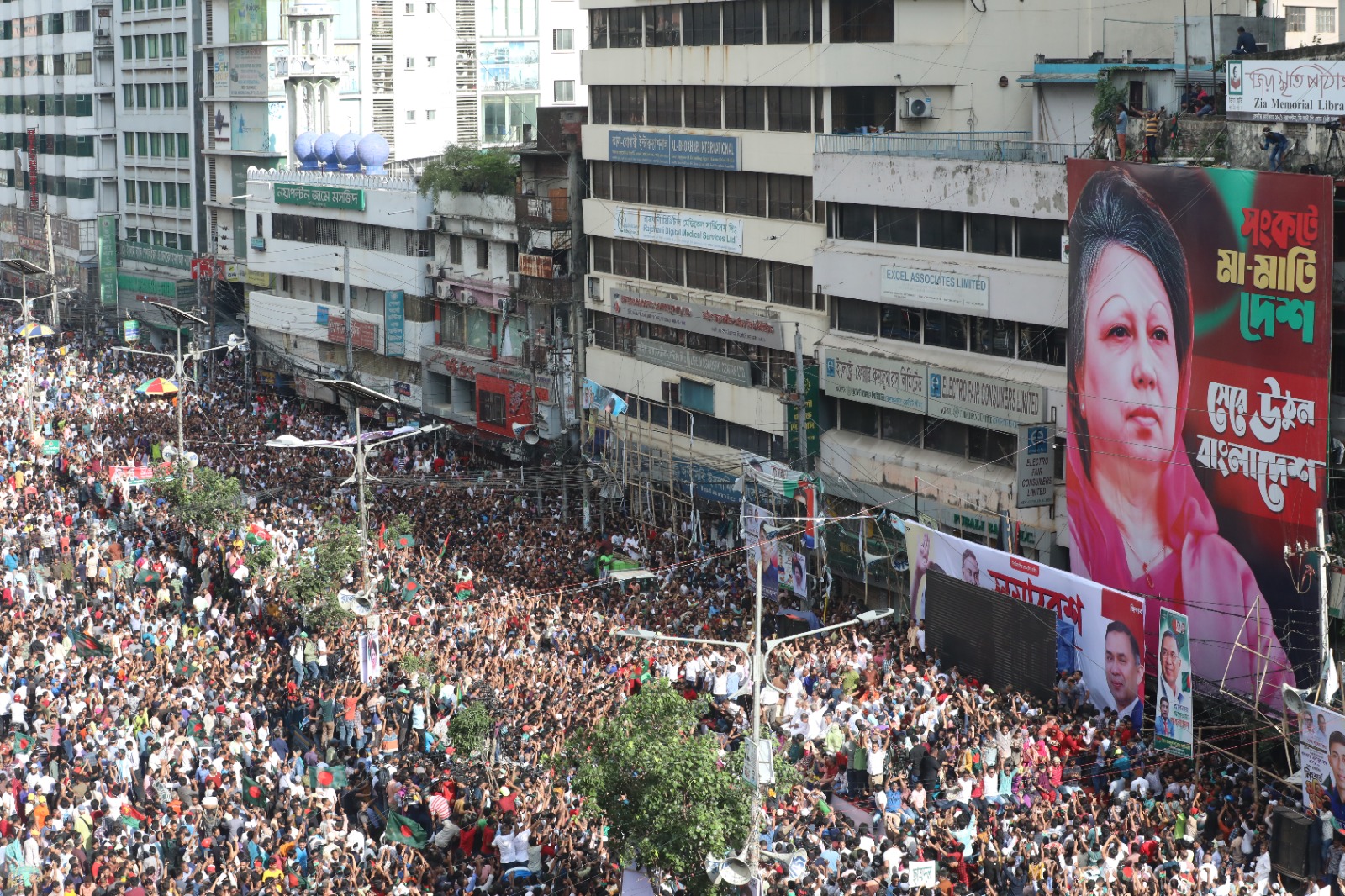Fascism, self-censorship, and the 'new Bangladesh'
Nazifa Raidah
The term “fascism” has been frequently used by our student revolutionaries, forming a central premise in their rhetoric alongside anti-discrimination. It is often used to describe the Awami League regime and its collaborators, but it remains unexplained in the discourse. When paired with an example, the meaning appears straightforward enough: we have seen censorship, favouritism, and authoritarianism, and therefore, the combination of these elements is branded as fascism.
But the concept of fascism is far more complex, given its historical origins, and simultaneously intriguing when explored in the context of Bangladesh. No other government in this country’s political history has been labelled “fascist” with such intensity, despite similar tendencies having existed before—at times to the same extent. The current context is unique in that it reflects the 15-year-long authoritarian rule of Awami League and its trickle-down oppression. Yet, understanding fascism is crucial if we seek to avoid the rise of another such regime.
Fascism is likely one of the most egregiously and frequently misused terms in political discourse. To use it carelessly as a partisan attack or in a sensationalised headline is quite irresponsible. Conventionally, the term is used to define a far-right, authoritarian and ultranationalist political ideology, characterised by a dictatorial leader, centralised power, militarism, and suppression of opposition. But that’s too simplistic. One pitfall when trying to define fascism is to base the definition solely on the particular methods used by individual regimes. For example, just because Mussolini’s Italy or Hitler’s Germany utilised certain tactics does not mean those tactics define fascism in its entirety. Fascism, in its generic form, exists as an abstract concept—not a rigid definition but a framework to help analyse individual political movements more deeply.
The most interesting aspect of fascism is perhaps that no one can inherently point out that they are victims of fascism until it’s too late. Moreover, fascism is not a monolithic concept. One can’t draw a line in the sand and say Francisco Franco’s rule in Spain and Juan Peron’s government in Argentina are true examples of fascism—and breaking down those regimes and keeping an eye out would eventually lead to its eradication. If that were the case, the world would not have seen the rise of the Red Brigades, an Italian far-left militant group active during the 1970s and 80s, which aimed to overthrow capitalist systems and establish a Marxist state. Its methods involved violent kidnappings, assassinations and terror, including the murder of Italian Prime Minister Aldo Moro in 1978. Critics have pointed out that the violent, authoritarian approach imposed its vision of a state using extreme means, which some have likened to fascistic tactics despite its leftist ideology.
Fascism promotes the idea of a tightly-controlled society and economy, often using nationalism as a key instrument. Former Prime Minister Sheikh Hasina used the nationalistic spirit of the Liberation War; through her “Joy Bangla” campaigns, she invoked the legacy of her father, Bangabandhu Sheikh Mujibur Rahman, as the unifying force to bring together people of different ethnicities and faiths. This nationalist framework enabled the Hasina regime to exercise strict control over both public and private lives, as personal freedoms were curbed with the excuse of serving a supposed greater good.On the other side, fascist tendencies grow complex in a post-revolution society and they are much harder to pinpoint. Take, for instance, the immortalisation of Abu Sayeed, Mir Mugdho or Farhan Faiyaz—among many others who have fallen during the July uprising. The images of these individuals, which previously served to create the premise of a collective struggle, are now being used to mobilise current demands for reform through mob justice or pitchforking against “the other.” This “other” is defined differently by each political party. While it is true that immortalising martyrs lays the ground for any revolution, using the images/rhetoric may pave the way for fascist tendencies and targeted violence.
The reason lies in the fact that fascist movements also rely heavily on mass mobilisation, with leaders often depicted as messianic figures embodying the nation’s greatness: for Awami League it has been Bangabandhu, for BNP it’s Ziaur Rahman, for Hefazat-e-Islam it’s Shah Ahmad Shafi, and for Jamaat-e-Islami it’s Ghulam Azam. This is not to say that popular leaders are fascists, but that they are exposed to the conditions that facilitate them to evolve into authoritarian leaders. Mass support could drive their agendas forward, and this populism may eventually propel them towards developing a fascist ideology, whether they are conscious of it or not. Many fail to see that parallels can be drawn between today’s calls for mob justice and the pitchforking against Bihari communities by pro-liberation forces, or the persecution of pro-liberation supporters and Bangalee Hindus by Jamaat-e-Islami. These actions, too, fall within similar fascist tendencies.

This gives rise to a second issue: censorship. When the Awami League fell, many believed this would usher in a new era of freedom of speech in Bangladesh. Yet, the reality proved otherwise. In a truly free society, criticism of all forms would be allowed—about AL, BNP, and Jamaat, as well as our newly-crowned leaders. Instead, we now see tags like “AL dalal,” “Shahbagi” and “Razakar” being used to silence dissent and stifle criticism of the status quo. This has led to a new form of self-censorship, where fear of labels discourages open discussion. Fascism usually thrives in such a situation, where certain ideologies are put up against others and inadvertently considered to be the opinion of the masses, creating the imaginary other.
The recipe for fascism and the way out for Bangladesh can probably be best understood through the work of historian George Mosse, who dedicated his life to exploring the origins of fascism after escaping Nazi Germany. Mosse concluded that fascism does not emerge solely from intellectual, societal or cultural precursors, but from something more elusive: mood. He identified nine key mobilising passions that fuel fascist movements: crisis, victimhood, duty, decline, community, security, violence, authority, and domination. These emotions, such as the desire for a single authoritative leader, lay the groundwork for fascism rather than logical ideas.

Mosse’s research warns us of the dangers of overusing the term “fascism,” a label that is recklessly applied to political opponents today, thus risking its true meaning getting lost. When the term is diluted, real fascists can exploit the emotional groundwork of fear, victimhood, and division to gain power without being noticed. The spirit of fascism is not dead, and recognising its true traits is the first step in preventing its return. If we remain vigilant and grounded in an accurate understanding of the emotional drivers of fascism, we can work to safeguard our society from repeating the same old mistakes.
Nazifa Raidah is a journalist, researcher and development practitioner
Back to Homepage